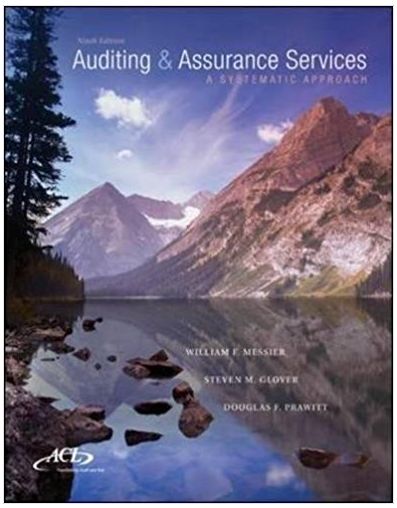Multiple Choice 1. An auditor would be most likely to identify a contingent liability by obtaining a
Question:
1. An auditor would be most likely to identify a contingent liability by obtaining a (n)
a. Accounts payable confirmation.
b. Bank confirmation of the entity€™s cash balance.
c. Letter from the entity€™s general legal counsel.
d. List of subsequent cash receipts.
2. An auditor should request that an audited entity send a letter of inquiry to those attorneys who have been consulted concerning litigation, claims, or assessments. The primary reason for this request is to provide
a. The opinion of a specialist as to whether loss contingencies are possible, probable, or remote.
b. A description of litigation, claims, and assessments that have a reasonable possibility of unfavorable outcome.
c. An objective appraisal of management€™s policies and procedures adopted for identifying and evaluating legal matters.
d. Corroboration of the information furnished by management concerning litigation, claims, and assessments.
3. An auditor issued an audit report that was dual dated for a subsequent event occurring after the date on which the auditor has obtained sufficient appropriate audit evidence but before issuance of the financial statements. The auditor€™s responsibility for events occurring subsequent to the date on which the auditor has obtained sufficient appropriate audit evidence was
a. Limited to the specific event referenced.
b. Extended to include all events occurring since the date on which the auditor has obtained sufficient appropriate audit evidence.
c. Extended to subsequent events occurring through the date of issuance of the report. d. Limited to events occurring up to the date of the last subsequent event referenced.
4. Which of the following procedures would an auditor most likely perform to obtain evidence about the occurrence of any changes in internal control that might affect financial reporting between the end of the reporting period and the date of the auditor€™s report?
a. Review a fire insurance settlement during the subsequent period.
b. Examine relevant internal audit reports issued during the subsequent period.
c. Inquire of the entity€™s legal counsel concerning litigation, claims, and assessments arising after year- end.
d. Confirm bank accounts established after year- end.
5. Final analytical procedures are generally intended to
a. Provide the auditor with a final, overall evaluation of the relationships among financial statement balances.
b. Test transactions to corroborate management€™s financial statement assertions.
c. Gather evidence concerning account balances that have not yet been investigated.
d. Retest control activities that appeared to be ineffective during the assessment of control risk.
6. Which of the following audit procedures is most likely to assist an auditor in identifying conditions and events that may indicate substantial doubt about an entity€™s ability to continue as a going concern?
a. Review compliance with the terms of debt agreements.
b. Review management€™s plans to dispose of assets.
c. Evaluate management€™s plans to borrow money or restructure debt.
d. Consider management€™s plans to reduce or delay expenditures.
7. Auditing standards primarily encourage which of the following conversations about financial reporting?
a. A conversation with those charged with governance to discuss matters pertaining to financial reporting.
b. A conversation with only management to discuss matters pertaining to financial reporting.
c. A conversation with the head of the entity€™s internal audit department and those charged with governance to discuss matters pertaining to financial reporting.
d. A conversation in which those charged with governance report on management€™s views on matters pertaining to financial reporting.
8. Which of the following matters should an auditor communicate to those charged with governance?
.png)
9. Which of the following events occurring after the issuance of a set of financial statements and the accompanying auditor€™s report would be most likely to cause the auditor to make further inquiries about the financial statements?
a. A technological development in the industry that could affect the entity€™s future ability to continue as a going concern.
b. The entity€™s sale of a subsidiary that accounts for 30 percent of the entity€™s consolidated sales.
c. The discovery of information regarding a contingency that existed before the financial statements were issued.
d. The final resolution of a lawsuit explained in a separate paragraph of the auditor€™sreport.
The audit report is issued by a certified public accountant who is appointed by the shareholders to provide assurance upon the truth and fairness of the financial statements prepared by the managers of the company. Audit report contains the... Financial Statements
Financial statements are the standardized formats to present the financial information related to a business or an organization for its users. Financial statements contain the historical information as well as current period’s financial... Accounts Payable
Accounts payable (AP) are bills to be paid as part of the normal course of business.This is a standard accounting term, one of the most common liabilities, which normally appears in the balance sheet listing of liabilities. Businesses receive...
Step by Step Answer:

Auditing and Assurance Services A Systematic Approach
ISBN: 978-1259162343
9th edition
Authors: William Messier, Steven Glover, Douglas Prawitt





